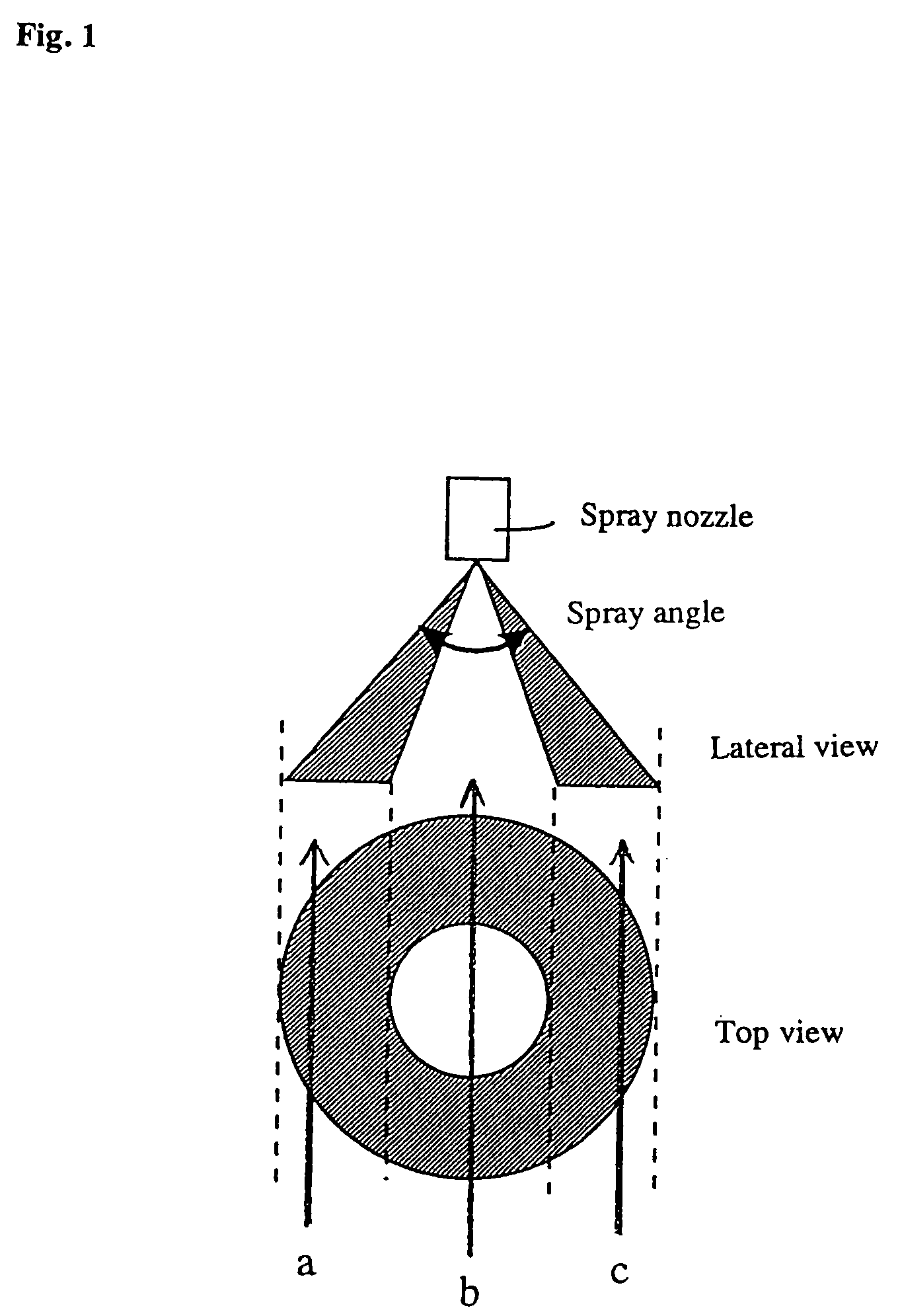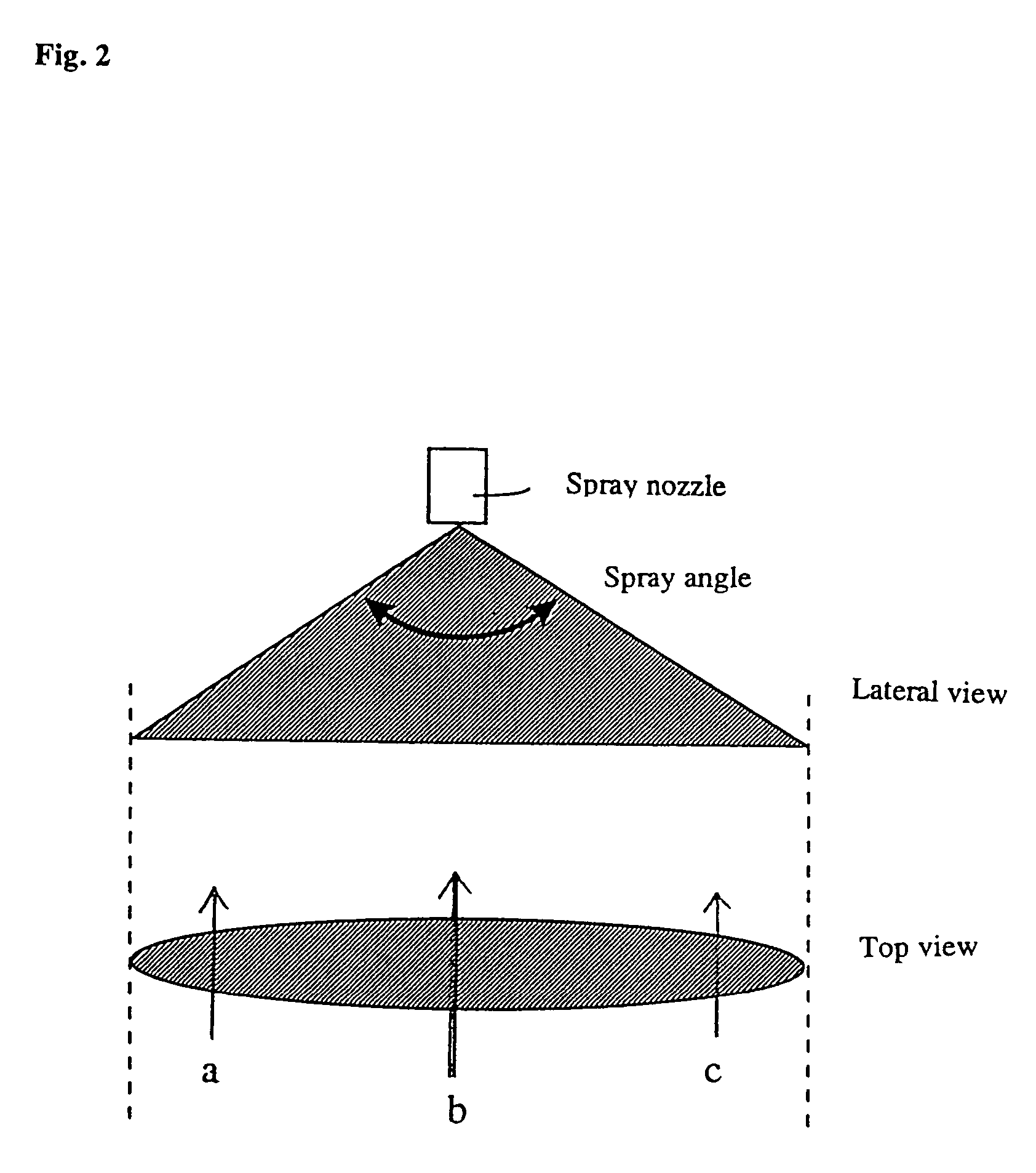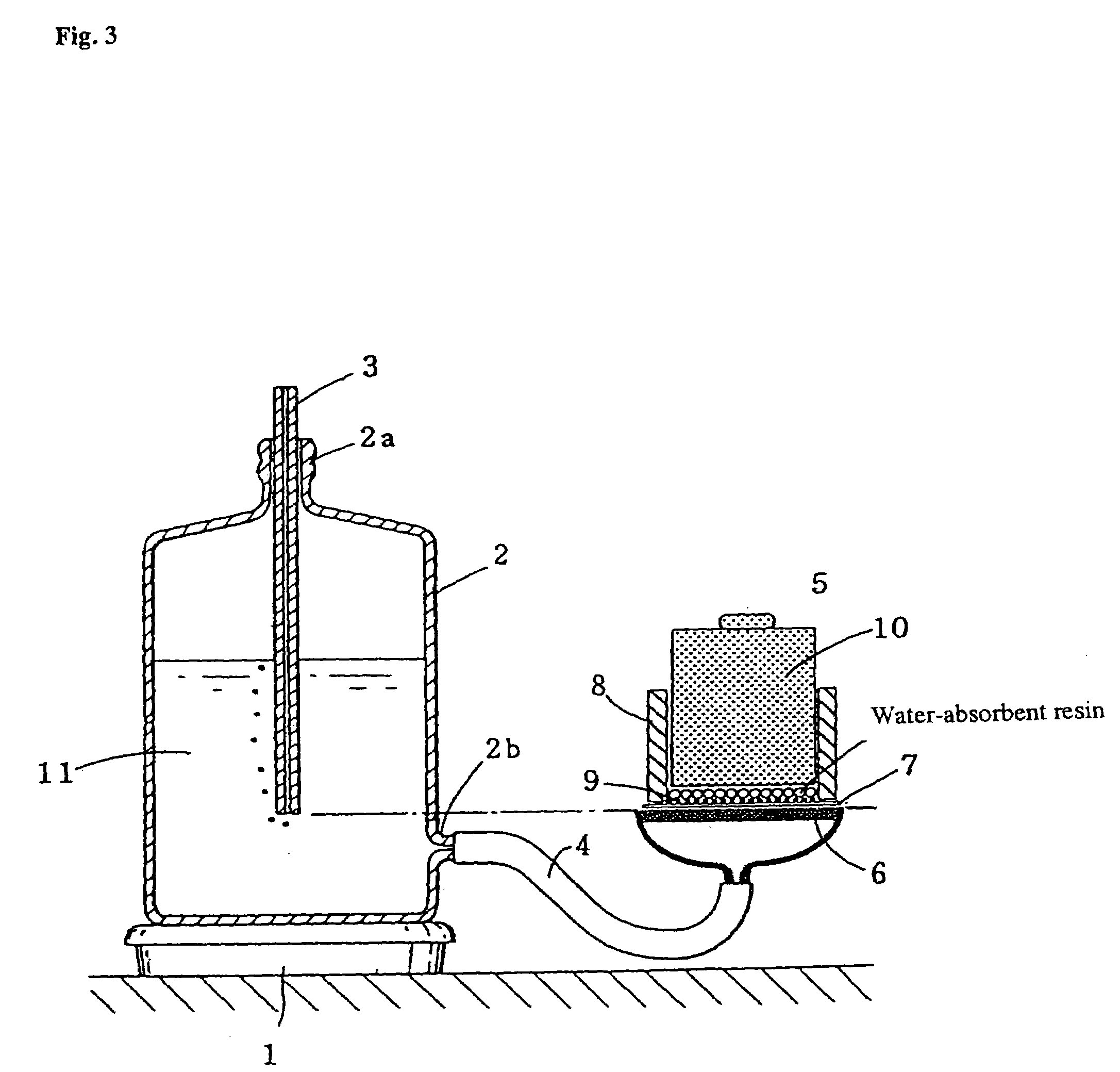Water-absorbent resin and production process therefor
a technology of water-absorbent resin and production process, which is applied in the direction of bandages, natural mineral layered products, cellulosic plastic layered products, etc., can solve the problems of low absorption capacity under load, low correlation between these properties, and inability to meet the requirements of water-absorption capacity, etc., to achieve uniform and efficient treatment of water-absorbent resins. favorable
- Summary
- Abstract
- Description
- Claims
- Application Information
AI Technical Summary
Benefits of technology
Problems solved by technology
Method used
Image
Examples
example 1
[0204]In a kneader equipped with two sigma type blades, an aqueous acrylic acid salt monomer solution having a monomer concentration of 38 weight % and a neutralization ratio of 75 mol % was prepared, wherein the aqueous monomer solution comprised an aqueous sodium acrylate solution, acrylic acid and water. Trimethylolpropane triacrylate as an internal-crosslinking agent was dissolved therein so that its concentration would be adjusted to 0.02 mol % of the monomer. Next, the amount of dissolved oxygen of the aqueous monomer solution was decreased and the entirety of the reaction apparatus was replaced with nitrogen gas by introducing the nitrogen gas into the aqueous solution. Next, while the two sigma blades were rotated, 0.05 mol % of sodium persulfate and 0.0003 mol % of L-ascorbic acid were added as a polymerization initiator to carry out a stirring polymerization in the kneader, thus obtaining a hydrogel polymer having an average particle diameter of about 2 mm after 40 minutes...
example 2
[0210]A surface-treated water-absorbent resin (2) was obtained in the same way as of Example 1 except that the blender was changed into a continuous high-speed-stirring blender equipped with two hydraulic flat spray nozzles (C2, 1 / 4M-V-115-05, made by H. Ikeuchi & Co., Ltd.; their spray patterns were double-convex-lens and elliptic cone shapes). Incidentally, the hydraulic flat spray nozzles (C2, 1 / 4M-V-115-05) were attached to the blender very carefully so that the spray angle would be the largest when the dispersing area of a spray-dispersing state was projected onto a sectional area perpendicular to the stirring shaft direction of the continuous high-speed-stirring blending apparatus.
[0211]The spray angle was 110° by use of the hydraulic flat spray nozzles (C2, 1 / 4M-V-115-05) when the dispersing area of a spray-dispersing state was projected onto a sectional area perpendicular to the stirring shaft direction of the blending apparatus. The dispersing area of a spray-dispersing sta...
example 3
[0214]A surface-treated water-absorbent resin (3) was obtained in the same way as of Example 1 except that the blender was changed into a continuous high-speed-stirring blender equipped with a hydraulic hollow cone spray nozzle (C3, 1 / 4M-K-100, made by H. Ikeuchi & Co., Ltd.; its spray pattern was a circular and hollow cone shape (a hollow cone spray shape)).
[0215]The hydraulic hollow cone spray nozzle (C3, 1 / 4M-K-100) was used. Therefore, the spray angle of the aqueous surface-treating agent solution from the hydraulic hollow cone spray nozzle was 70°, and the dispersing area of a spray-dispersing state projected onto a sectional area perpendicular to the shaft direction of the blending apparatus accounted for about 77%.
[0216]After finishing the above procedure, the internal portion of the blender was observed. Then, large piled materials were observed little.
[0217]The properties of the resultant surface-treated water-absorbent resin (3) were listed in Table 1.
PUM
| Property | Measurement | Unit |
|---|---|---|
| particle diameters | aaaaa | aaaaa |
| particle diameters | aaaaa | aaaaa |
| particle diameters | aaaaa | aaaaa |
Abstract
Description
Claims
Application Information
 Login to View More
Login to View More - R&D
- Intellectual Property
- Life Sciences
- Materials
- Tech Scout
- Unparalleled Data Quality
- Higher Quality Content
- 60% Fewer Hallucinations
Browse by: Latest US Patents, China's latest patents, Technical Efficacy Thesaurus, Application Domain, Technology Topic, Popular Technical Reports.
© 2025 PatSnap. All rights reserved.Legal|Privacy policy|Modern Slavery Act Transparency Statement|Sitemap|About US| Contact US: help@patsnap.com



